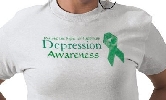Epilepsy is a recurrent seizure disorder caused by abnormal electrical discharges from brain cells, often in the cerebral cortex. It is not a distinct disease, it is a group of disorders for which recurrent seizures are the main symptom. Different forms of epilepsy are either secondary to a particular brain abnormality or neurological disorder, or are said to be "idiopathic," without any clear cause.
Generalized seizures are produced by electrical impulses from throughout the entire brain, whereas partial seizures are produced (at least initially) by electrical impulses in a relatively small part of the brain. The part of the brain generating the seizures is sometimes called the focus.
Seizures are symptoms of a brain problem. They happen because of sudden, abnormal electrical activity in the brain. When people think of seizures, they often think of convulsions in which a person's body shakes rapidly and uncontrollably. Not all seizures cause convulsions. There are many types of seizures and some have mild symptoms. Seizures fall into two main groups. Focal seizures, also called partial seizures, happen in just one part of the brain. Generalized seizures are a result of abnormal activity on both sides of the brain.
Signs and symptoms
Seizures can cause involuntary changes in body movement or function, sensation, awareness, or behavior. A seizure can last from a few seconds to status epilepticus, a continuous seizure that will not stop without intervention. Seizure is often associated with a sudden and involuntary contraction of a group of muscles. However, a seizure can also be as subtle as marching numbness of a part of the body, a brief loss of memory, sparkling or flashes, sensing an unpleasant odor, a strange epigastric sensation or a sensation of fear. Therefore seizures are typically classified as motor, sensory, autonomic, emotional or cognitive.
For the majority of people who have seizures, there's one symptom that follows having a seizure--a very intense feeling of fatigue. They could be just waking up in the morning, have a little movement with their arm, and minutes later they are asleep. Some people who've had Grand Mal seizures or even partial seizures will literally lie down on the floor and be asleep within minutes.
Seizures Treatment
Turn the person on his or her side after the convulsion ceases. This may help drain any moisture or secretions from the person's mouth.
Do not attempt to hold down or restrain the person.
Most seizures are self-limiting and stop by themselves after various periods of time. However, a person having a seizure may be injured; breathe food, fluid, or vomit into the lungs; or not get enough oxygen. During a seizure, it is important to protect the person from injury. Turn the person on his or her side, so that any vomit is expelled. See seizure first aid .
There are many medications used in the treatment of epilepsy and seizures. Most of these medications are taken by mouth. Many people with epilepsy are able to prevent seizures by taking only one drug, but others require more than one.



